Project Log: Sunday, October 24, 2010
It might sound strange to say that I'd been looking
forward to sanding the interior, but it was true.
With the bulk of the demolition complete--except for
dealing with the forward water tank--I'd had more than
enough of the state of the interior and was ready to
start cleaning it up and preparing for rebuilding steps.
I started in the main saloon. The hull, undersides
of the sidedecks, and cabin trunk sides were covered
with contact adhesive that had once held the vinyl liner
material in place, and the bilges and areas once covered
by lockers were painted out with gray paint or gelcoat.
Bits of ripped tabbing, left over from my removal of
various interior components, covered some areas, and the
general state of things was dingy and dirty.
Note: these "before" pictures date back to
September 2010. Since that time, I'd cleaned up
the worst of the mud seen in the bilge. |
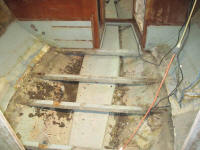
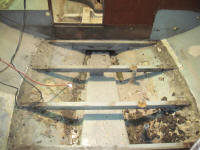
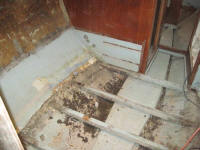
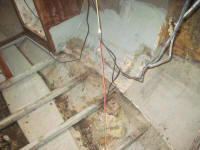
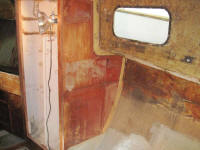
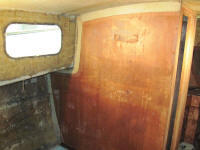 |
Over the course of several hours, I sanded the entire
area--including the passageway to the forward cabin--to
remove adhesive residue, silt, rough areas, and to
generally prepare all surfaces for any future work.
I aimed for a general clean-up of the surfaces, and made
no attempts to remove every last bit of old adhesive or
paint, but enough that the surfaces would be ready to
accept whatever treatment I might eventually choose.
If, in the course of reconstruction, I found a need to
tab new structure into the hull or underside of the
deck, I'd further prepare the immediate mating surfaces
then.
The original main bulkheads featured varnished teak
veneer, which was in marginal condition. Earlier,
I'd decided to reface the remaining bulkheads with new
material, since the original surfaces were peppered with
fastener holes, shadows of long-removed equipment, and
were generally not in acceptable condition for re-use.
To that end, I sanded the bulkhead surfaces to remove
the old varnish and prepare the surfaces for future
adhesive bonding and so forth. Besides:
getting rid of the old surface finish (here and
elsewhere) simply made me feel better. I left
unsanded some small areas where I'd made reference marks
on the bulkheads; these demarked the height and width of
the original L-shaped dinette seats. |
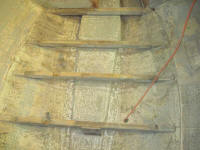
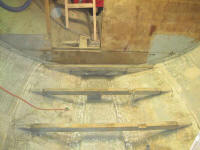
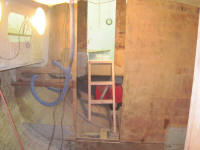
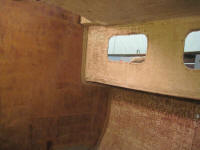
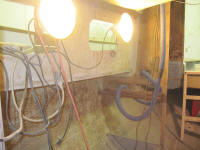
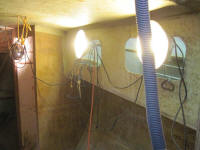
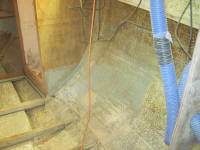
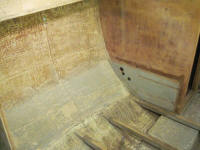
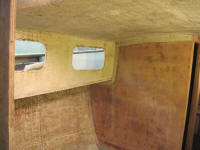
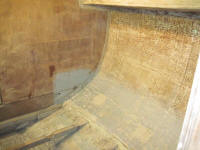
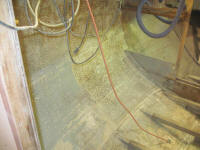
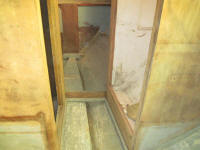
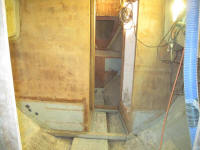 |
The overhead was clean, bare fiberglass, and hadn't been
covered with adhesive since the original overhead panels
were vinyl-covered plywood sheets screwed into the
overhead. I wasn't yet sure how I planned to
address finishing/covering the overhead, but to prepare
for the possibility that I'd be bonding anything to it,
I decided to lightly scuff the surface while I was in
the mode.
All in all, a very satisfying day's work. I
couldn't wait to continue with the other interior
spaces. |
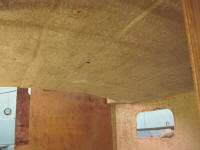 |
| |
Total Time Today: 4 hours
|
<
Previous |
Next > |
|
|





















